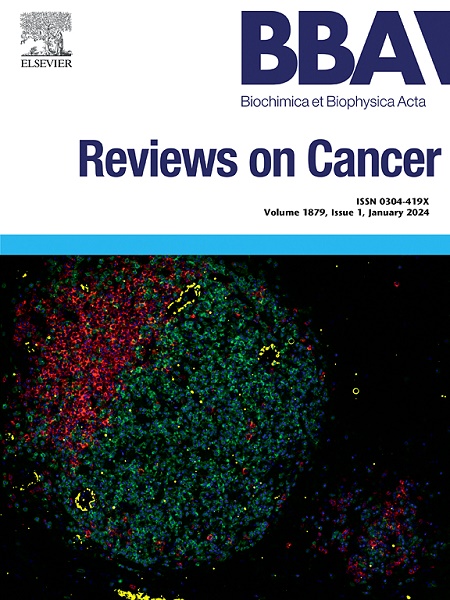淋巴瘤治疗中的靶向药物输送系统:进展和临床前景
IF 9.7
1区 医学
Q1 BIOCHEMISTRY & MOLECULAR BIOLOGY
Biochimica et biophysica acta. Reviews on cancer
Pub Date : 2025-08-21
DOI:10.1016/j.bbcan.2025.189429
引用次数: 0
摘要
淋巴瘤是一种异质性的血液学肿瘤,对精确治疗提出了重大挑战。随着靶向药物和细胞治疗等新的淋巴瘤干预策略的发展,淋巴瘤患者的预后和转归得到了极大的改善。然而,也有大约30%的患者出现复发并最终死亡,这主要是由于目前治疗的有效性和靶向性较低。新型药物传递系统的进步已经彻底改变了淋巴瘤治疗的药物疗效和肿瘤靶向性。在过去的几十年里,各种药物递送系统,包括纳米载体、蛋白质、适体和外泌体,在淋巴瘤的靶向治疗中显示出良好的前景。这些靶向递送系统可以通过物理包埋或化学偶联的方式携带抗淋巴瘤药物,通过改善毒性、延长体循环时间、促进血脑屏障的通过,减轻副作用,提高治疗效果。本文综述了淋巴瘤治疗中不同的药物传递系统,并重点介绍了它们的应用现状和潜在的未来意义,以期为淋巴瘤靶向治疗的发展铺平道路。本文章由计算机程序翻译,如有差异,请以英文原文为准。
Targeted drug delivery systems in Lymphoma treatment: Advances and clinical perspectives
Lymphomas are a heterogeneous group of hematologic tumors that pose a significant challenge in precise treatment. With the development of novel intervention strategies in lymphoma, such as targeted drugs and cell therapy, the prognosis and outcome of lymphoma patients have been greatly improved. However, there are also about 30 % of patients that display recurrence and eventually die, mainly due to the low effectiveness and targeting of current treatments. The advancements in novel drug delivery systems have revolutionized drug efficacy and tumor targeting in lymphoma treatment. Over the past few decades, various drug delivery systems, including nanocarriers, proteins, aptamers, and exosomes, have shown promising prospects in targeted therapy for lymphoma. These targeted delivery systems could carry anti-lymphoma drugs through physical embedding or chemical conjugation, which mitigate side effects and enhance therapeutic efficacy by ameliorating toxicity, prolonging systemic circulation time, and facilitating crossing of the blood-brain barrier. This review aims to summarize different drug delivery systems employed in lymphoma treatment and highlight their current applications and potential future implications, which might pave the way for the development of targeted therapy in lymphoma.
求助全文
通过发布文献求助,成功后即可免费获取论文全文。
去求助
来源期刊

Biochimica et biophysica acta. Reviews on cancer
医学-生化与分子生物学
CiteScore
17.20
自引率
0.00%
发文量
138
审稿时长
33 days
期刊介绍:
Biochimica et Biophysica Acta (BBA) - Reviews on Cancer encompasses the entirety of cancer biology and biochemistry, emphasizing oncogenes and tumor suppressor genes, growth-related cell cycle control signaling, carcinogenesis mechanisms, cell transformation, immunologic control mechanisms, genetics of human (mammalian) cancer, control of cell proliferation, genetic and molecular control of organismic development, rational anti-tumor drug design. It publishes mini-reviews and full reviews.
 求助内容:
求助内容: 应助结果提醒方式:
应助结果提醒方式:


